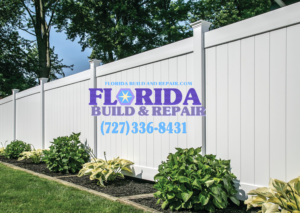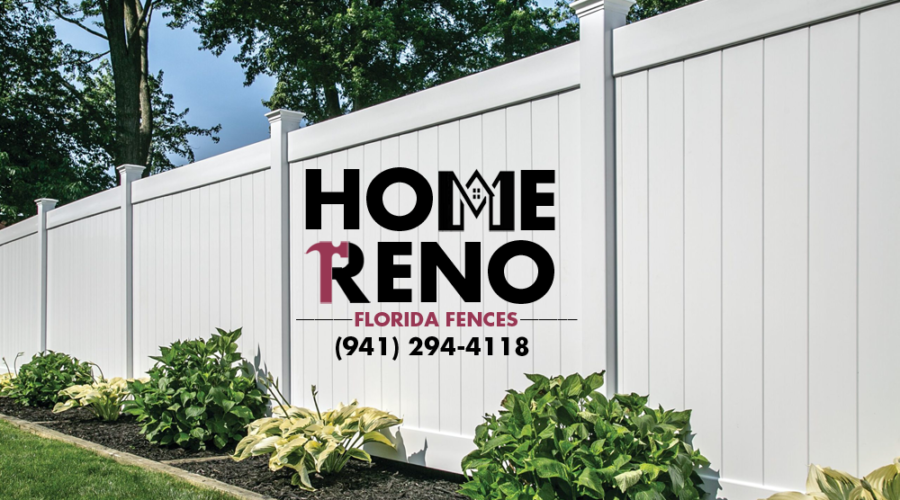DIY Vinyl Privacy Fence Installation in Miami: What You Need to Know
- Vinyl Privacy Fence Installation Coral Terrace, Vinyl Privacy Fence Installation Miami, Vinyl Privacy Fence Installation Miami Beach, Vinyl Privacy Fence Installation Miami Gardens, Vinyl Privacy Fence Installation North Miami, Vinyl Privacy Fence Installation Olympia Heights, Vinyl Privacy Fence Installation Surfside, Vinyl Privacy Fence Installation University Park, Vinyl Privacy Fence Installation Westchester
Installing a DIY vinyl privacy fence in Miami is a rewarding project that boosts your yard’s privacy and curb appeal with minimal upkeep compared to wood. Vinyl is durable, weather-resistant, and comes in pre-assembled panels, making it DIY-friendly for those with basic skills. However, it requires careful planning, precise measurements, and some physical effort. Below is a comprehensive guide on what you need to know to tackle a DIY vinyl privacy fence installation, covering preparation, costs, challenges, and key tips to ensure success.
1. Why Choose Vinyl for a DIY Privacy Fence?
- Pros:
- Low maintenance: No painting or staining; cleans with soap and water.
- Durable: Resists rot, insects, and fading (many brands offer 20+ year warranties).
- Privacy-focused: Solid panels block views effectively (6-8 ft tall options).
- DIY-friendly: Kits include pre-cut panels and slotted posts, reducing cutting.
- Aesthetic: Clean, modern look in colors like white, tan, or gray.
- Cons:
- Higher upfront cost: $25-$50 per linear foot vs. $15-$30 for wood.
- Less forgiving: Misaligned posts are hard to fix once concrete sets.
- Heavy panels: 6-8 ft panels (50-100 lbs) need two people to handle.
- Limited flexibility: Vinyl can’t be easily reshaped for unique designs.
2. Key Considerations Before Starting
- Skill Level: Basic DIY experience (using a level, drill, and saw) is enough. No advanced carpentry needed, but precision is critical.
- Time Commitment: Expect 2-4 days for a 100-ft fence with two people, depending on terrain and weather.
- Physical Effort: Digging post holes and lifting panels is strenuous. Renting an auger helps.
- Local Regulations: Check zoning laws or HOA rules for height limits (typically 6 ft), setbacks, and permits. Call 811 (U.S.) to mark utility lines.
- Property Lines: Confirm boundaries with a survey map or professional surveyor to avoid neighbor disputes.
3. Materials and Tools Needed
Materials
- Vinyl Fence Kit: Includes panels (6 or 8 ft wide, 6 ft tall), posts (4×4 or 5×5), rails, and caps. Popular brands: Veranda, Freedom, WamBam.
- Concrete Mix: 1-2 bags (50 lbs each) per post for stability.
- Gravel: 4-6 inches per post hole for drainage.
- Gate Kit (optional): Includes hinges, latch, and gate panel.
- Marking Paint and Stakes: For layout.
- PVC Adhesive (optional): For permanent post caps.
Tools
- Essential: Post-hole digger, shovel, tape measure, level, string line, rubber mallet, drill, screwdriver, wheelbarrow (for concrete).
- Helpful: Circular saw (for trimming), auger (rent for $50-$100/day), laser level (for slopes).
- Safety Gear: Gloves, goggles, sturdy boots.
Where to Buy
- Home Depot, Lowe’s, or Menards stock vinyl kits (e.g., Veranda 6×8 panel ~$100-$150). Online retailers like Fence Depot or WamBam offer no-dig options. Check X for local deals or secondhand kits.
4. Cost Breakdown
- Materials: $25-$50 per linear foot (e.g., $2,500-$5,000 for 100 ft). Includes panels, posts, concrete, gravel.
- Tools: $100-$300 if buying (renting is cheaper, ~$50-$150 for a weekend).
- Permits: $0-$200, depending on local rules.
- Total DIY Cost: $2,000-$6,000 for 100 ft, vs. $4,000-$10,000 for professional installation.
- Savings Tip: Compare prices at big-box stores and local suppliers. Avoid overbuying panels—measure twice.
5. Step-by-Step Overview
Here’s a condensed version of the installation process (see my previous response for a detailed guide):
- Plan Layout: Measure fence line, mark post locations (every 6-8 ft), and confirm regulations/property lines.
- Dig Post Holes: 2-3 ft deep, 10-12 inches wide. Add gravel base.
- Set Posts: Start with corner/end posts. Place in holes, pour concrete, level, and brace. Let cure 24-48 hours.
- Install Panels: Slide panels into slotted posts, checking level. Adjust posts before concrete sets if fit is off.
- Add Rails/Caps: Secure top/bottom rails (if needed) and snap/glue post caps.
- Install Gates (optional): Use heavy-duty posts, hang gate, and test swing/latch.
- Clean Up: Fill gaps with soil, wash panels, and inspect for stability.
6. Common Challenges and How to Overcome Them
- Uneven Terrain:
- Issue: Slopes or dips create gaps or uneven panels.
- Solution: Use stepped panels (fixed height, stepped down slopes) or rackable panels (angle to follow ground). Measure carefully for each section.
- Misaligned Posts:
- Issue: Posts set too close/far apart make panels unfit.
- Solution: Dry-fit panels before pouring concrete. Use a string line and measure twice.
- Hard Soil or Roots:
- Issue: Digging is slow or impossible without power tools.
- Solution: Rent an auger or use a digging bar. Soak soil to soften it.
- Vinyl Cracking:
- Issue: Forcing panels or over-tightening screws causes damage.
- Solution: Tap gently with a rubber mallet. Follow kit instructions for assembly.
- Utility Lines:
- Issue: Hitting pipes or cables while digging.
- Solution: Call 811 at least 3 days before digging to mark lines. Hand-dig near marked areas.
7. Top DIY Tips
- Start Small: Begin with a short section (e.g., 16-24 ft) to practice before tackling the full fence.
- Work with a Partner: Panels are heavy, and an extra set of hands speeds up leveling and bracing.
- Rent an Auger: Saves hours of digging, especially in clay or rocky soil.
- Check Kit Specs: Some kits (e.g., WamBam) use no-dig anchors, simplifying installation.
- Watch Tutorials: YouTube has step-by-step videos for brands like Veranda or Freedom. Search “DIY vinyl fence install” for visuals.
- Test-Fit Everything: Don’t pour concrete until panels fit perfectly—vinyl is unforgiving.
- Plan for Weather: Avoid windy days (panels catch wind) or heavy rain (messes with concrete).
8. Maintenance After Installation
- Cleaning: Hose down annually or use soap/water for stains. Avoid pressure washers (can damage vinyl).
- Inspections: Check for loose caps or cracked panels after storms. Replace damaged sections (kits often include spares).
- Repairs: Use PVC adhesive for minor cracks or order replacement panels from the manufacturer.
9. When to Call a Pro
Consider hiring a contractor if:
- Your yard has steep slopes or obstacles (e.g., trees, retaining walls).
- You lack time or tools for digging and leveling.
- Local regulations are complex (pros handle permits).
- You want a custom design (e.g., curved lines or mixed materials).
- Cost: $40-$100 per linear foot installed, but you save labor stress.
10. Additional Resources
- Suppliers: Home Depot (in-store pickup), Lowe’s (online configurators), or Fence Depot (bulk discounts).
- Tutorials: Check YouTube for “DIY vinyl fence Veranda” or “Freedom fence install.”
- Local Help: If you share your location, I can search for nearby suppliers or check X for recent posts about DIY experiences or contractor recommendations.
- Kits: Look into no-dig options like WamBam for faster installs on flat yards.
Next Miami Vinyl Privacy Fence Installation Steps
- Measure Your Yard: Calculate linear footage to estimate costs and materials.
- Choose a Kit: Decide on color (white, tan) and height (6 or 8 ft). Check reviews for durability.
- Get Permits: Call your local office to confirm rules.
- Gather Tools: Buy or rent now to avoid delays.

Enhancing Your Yard with Wood Privacy Fence Installation in Miami
Enhancing your yard with a wood privacy fence installation in Miami is an excellent way to boost your property’s security, aesthetics, and overall outdoor experience.

Miami Privacy Fence Installation on a Budget: Affordable Options
As of 2025, Miami homeowners looking to enhance their privacy while maintaining budget constraints have several viable fencing options. The average fence installation in Miami

Privacy Fence Installation on a Budget in Florida: Affordable Options
According to recent data, the average privacy fence in Florida costs between $1,800 and $8,000, depending on materials, size, and installation method. For homeowners seeking

Is Vinyl Privacy Fence Installation in Surfside Right for You?
Deciding whether a vinyl privacy fence installation in Surfside is right for you depends on your needs, budget, property, and preferences. Vinyl fences are popular

Vinyl Privacy Fence Installation in Coral Terrace: Cost, Tips, and Benefits
Installing a vinyl privacy fence in Coral Terrace is an excellent way to enhance your yard’s security, seclusion, and aesthetic appeal. Its durability and low

How to Install a Vinyl Privacy Fence in University Park Like a Pro
Installing a vinyl privacy fence in University Park like a professional requires meticulous planning, precise execution, and attention to detail. Vinyl’s durability and low maintenance

Top Mistakes to Avoid When Installing a Vinyl Privacy Fence in Miami Beach
Installing a vinyl privacy fence in Miami Beach as a DIY project or even with professional help can seem straightforward, but there are several pitfalls

DIY Vinyl Privacy Fence Installation in Miami: What You Need to Know
Installing a DIY vinyl privacy fence in Miami is a rewarding project that boosts your yard’s privacy and curb appeal with minimal upkeep compared to

Step-by-Step Guide to Vinyl Privacy Fence Installation in Westchester
Installing a vinyl privacy fence in Westchester is a manageable project if you plan carefully and follow a clear process. Vinyl is durable, low-maintenance, and

How Long Does Miami Fence Installation Take? A Timeline Breakdown
Timeline Breakdown for Miami Fence Installation The time required for fence installation in Miami can vary based on several factors, including the size of the

Step-by-Step Guide to Miami Vinyl Privacy Fence Installation
Here’s a step-by-step guide for installing a vinyl privacy fence in Miami: Planning and Preparation Materials and Tools Needed Installation Process Step 1: Dig Post


